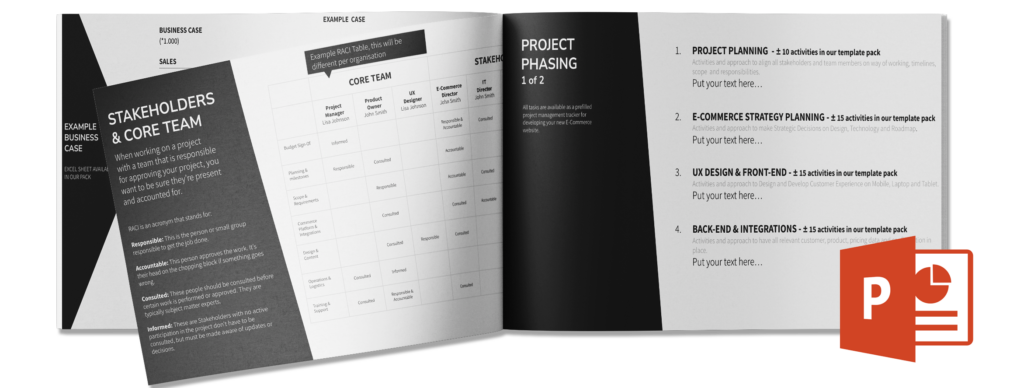In today’s digital-first economy, launching a successful e-commerce website is more crucial than ever. Whether you’re a project manager, CMO, E-Commerce Director, developer, designer, or tester, understanding the potential pitfalls in your e-commerce project plan can mean the difference between a thriving online store and a costly failure. This comprehensive guide will walk you through 10 critical mistakes to avoid, ensuring your e-commerce venture is set up for success from day one.
1. Underestimating the Importance of a Solid E-Commerce Project Plan
One of the most common and detrimental mistakes in e-commerce development is failing to create a comprehensive project plan. A well-structured e-commerce project plan is your roadmap to success, guiding every decision and milestone along the way.
Key components of an effective e-commerce project plan include:
- Clear objectives and key performance indicators (KPIs)
- Detailed timeline with realistic deadlines
- Resource allocation and team responsibilities
- Budget breakdown and financial projections
- Risk assessment and mitigation strategies
Without a solid plan, you risk scope creep, missed deadlines, and budget overruns. Take the time to develop a thorough e-commerce project plan before diving into development. This upfront investment will pay dividends throughout the project lifecycle.
2. Neglecting Mobile Optimization
In 2024, mobile commerce is no longer optional—it’s essential. Failing to prioritize mobile optimization in your e-commerce project plan can result in lost sales and decreased customer satisfaction.
Consider these mobile optimization strategies:
- Implement responsive design to ensure your site looks great on all devices
- Optimize page load times for mobile users
- Simplify navigation and streamline the mobile checkout process
- Utilize mobile-specific features like touch-friendly buttons and swipe gestures
Remember, many customers will first encounter your brand on a mobile device. Make sure their experience is seamless and engaging to encourage conversions and build brand loyalty.
3. Overlooking User Experience (UX) Design
A visually appealing website is important, but user experience should be your top priority. Poor UX can lead to high bounce rates, abandoned carts, and frustrated customers.
To avoid this pitfall:
- Conduct thorough user research to understand your target audience’s needs and preferences
- Create intuitive navigation and clear information architecture
- Implement effective search functionality with filters and sorting options
- Design a streamlined checkout process with minimal steps
- Provide clear product information, high-quality images, and customer reviews

Invest in UX testing throughout the development process to identify and address pain points before launch. Your e-commerce project plan should allocate sufficient time and resources for UX design and testing.
4. Ignoring Search Engine Optimization (SEO)
Many e-commerce projects focus solely on design and functionality, neglecting the critical aspect of search engine optimization. Without a solid SEO strategy, your beautiful new website may struggle to attract organic traffic.
Incorporate these SEO best practices into your e-commerce project plan:
- Conduct keyword research to inform your content strategy
- Optimize product descriptions, meta tags, and URLs for target keywords
- Implement a logical site structure with clear internal linking
- Create unique, high-quality content to boost your site’s authority
- Ensure your site is technically sound with fast load times and mobile-friendliness
By prioritizing SEO from the outset, you’ll set your e-commerce site up for long-term success in search engine rankings.
5. Choosing the Wrong E-Commerce Platform
Selecting an e-commerce platform without careful consideration can lead to limitations in functionality, scalability issues, and costly migrations down the line. Your choice of platform should align with your business goals, budget, and technical requirements.
Factors to consider when choosing an e-commerce platform:
- Scalability to accommodate future growth
- Integration capabilities with existing systems (CRM, ERP, etc.)
- Customization options to match your brand and unique needs
- Security features and compliance with industry standards
- Total cost of ownership, including licensing, hosting, and maintenance
Take the time to research and compare different platforms, and consider seeking expert advice to make an informed decision.
6. Underestimating Security Risks
E-commerce websites are prime targets for cybercriminals due to the sensitive data they handle. Failing to prioritize security in your e-commerce project plan can lead to data breaches, financial losses, and damaged customer trust.
Essential security measures to implement:
- SSL certification for encrypted data transmission
- PCI DSS compliance for secure payment processing
- Regular security audits and penetration testing
- Strong password policies and multi-factor authentication
- Secure hosting with regular backups and disaster recovery plans
Make security a cornerstone of your e-commerce project plan, involving IT security experts from the early stages of development.
7. Neglecting Content Strategy
Content is king in e-commerce, yet many projects treat it as an afterthought. A weak content strategy can result in poor product descriptions, lack of engagement, and missed opportunities for upselling and cross-selling.
To develop a strong content strategy:
- Create detailed, benefit-focused product descriptions
- Develop a content calendar for blog posts, buying guides, and other valuable resources
- Implement user-generated content like reviews and testimonials
- Use high-quality product images and videos to showcase your offerings
- Craft compelling category pages that guide users through your product range
Your e-commerce project plan should allocate resources for content creation and ongoing content management to keep your site fresh and engaging.
8. Overlooking Analytics and Data-Driven Decision Making
Launching your e-commerce site is just the beginning. Without proper analytics in place, you’ll be flying blind when it comes to optimizing performance and making informed business decisions.
Key analytics considerations:
- Implement a robust analytics platform like Google Analytics 4
- Set up conversion tracking and goal measurement
- Use heat mapping and session recording tools for UX insights
- Implement A/B testing capabilities for ongoing optimization
- Create dashboards for key performance metrics

Make sure your e-commerce project plan includes the implementation of analytics tools and training for team members on data interpretation and analysis.
9. Failing to Plan for Post-Launch Support and Maintenance
Many e-commerce projects focus solely on the launch, neglecting to plan for ongoing support and maintenance. This oversight can lead to technical issues, security vulnerabilities, and a poor customer experience.
Include these elements in your post-launch plan:
- Establish a dedicated support team or partner with a reliable service provider
- Implement a ticketing system for issue tracking and resolution
- Create a schedule for regular software updates and security patches
- Plan for ongoing performance optimization and speed improvements
- Budget for continuous improvements based on user feedback and analytics data
Your e-commerce project plan should extend well beyond the launch date, ensuring your site remains secure, up-to-date, and optimized for performance.
10. Underestimating the Importance of Testing
Thorough testing is critical to the success of any e-commerce project, yet it’s often rushed or inadequately planned. Insufficient testing can lead to bugs, poor user experience, and lost sales.
Incorporate these testing strategies into your e-commerce project plan:
- Conduct comprehensive functional testing across all site features
- Perform cross-browser and cross-device compatibility testing
- Implement load testing to ensure your site can handle peak traffic
- Carry out security testing to identify vulnerabilities
- Engage in user acceptance testing with real customers before launch
Allocate ample time and resources for testing in your project timeline, and consider using automated testing tools to increase efficiency and coverage.
Be prepared with a E-Commerce Projectplan
Building a successful e-commerce website requires careful project planning, attention to detail, and a holistic approach that considers every aspect of the online shopping experience. By avoiding these 10 critical pitfalls in your e-commerce project plan, you’ll be well-positioned to create a robust, user-friendly, and profitable online store.
Remember, the key to success lies in thorough planning, continuous optimization, and a commitment to delivering value to your customers. Whether you’re a project manager, CMO, E-Commerce Director, developer, designer, or tester, keeping these potential pitfalls in mind will help you contribute to a successful e-commerce project that stands the test of time.
By addressing these common issues head-on and incorporating best practices into your e-commerce project plan, you’ll be setting your online business up for long-term success in the competitive world of digital commerce.


